The office landscape of today
2022, like the past few years – has been a year of many firsts. Many of the restrictions imposed during the pandemic slowly started to lift during the year, giving offices the opportunity to bring employees back to a more social, face-to-face work environment.
The recent trends that dictate office culture and design have been evolving rapidly due to the changing environment caused by the pandemic. With employees returning to offices at full speed, this year marked the official beginning of stability for many companies all over the globe. This shift has presented itself as an opportunity for companies to revamp the concept of office spaces and reinvent the workplace experience entirely.
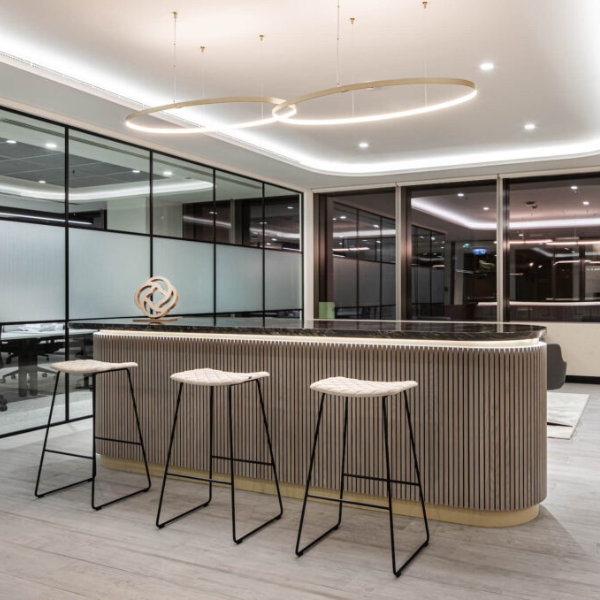

The pandemic has shown employees and businesses alike that comfort is crucial in enabling productivity. Studies have found that employees have shown a 13% increase in productivity when working from home. This can mainly be attributed to the adaptability of a work-from-home setup. Employees can set up their space as they like to prioritize their well-being which, in turn, increases their productivity. Due to this positive impact, many companies made 2022 the year of the hybrid workplace. This essentially meant introducing and maintaining connectivity between teams at all times, regardless of whether they were present in the office or not. This flexible approach to working put the employees at the forefront of the organization, and gave them the choice to work wherever and however they please.
The introduction of a hybrid work model in 2022 meant that offices were not operating at full capacity like they once did pre-pandemic. It also meant that they had to emulate the comforting environment that a work-from-home setup provided in order to maintain consistent productivity and satisfaction levels. To do so, companies started by creating spaces that allowed employees to socialize and relax while working, recognizing this as a key component that has risen to prominence within the office design landscape. Flexibility within the office is a highly valued trait of an effective workplace, with zones that cater to group as well as individual activities. Solo working stations have also been introduced, primarily due to the fact that many employees are now accustomed to effectively working on their own. This addressed any hesitation about working in a shared space after almost two years of isolation. Moreover, the incorporation of technology has increased tremendously, with connectivity and security being at the forefront. In this content piece, we dive into what these changes mean for design in the workplace, the trends that dominated this year, and what the future holds for the physical workplace in 2023 and beyond.
Office Design Trends of 2022
As mentioned above, this year marked the re-introduction of employees to the workplace. After the pandemic, companies came to understand that in order to ensure a seamless transition back into the office, they needed to change how the space functions. The new reality of the workplace has brought with it a sense of understanding employee needs for organizational and personal success as well as satisfaction. Employees have begun looking for workspaces that provide them with control over their environment and well-being. 2022 saw a general shift in office trends, almost revamping how the workplace would look like completely.
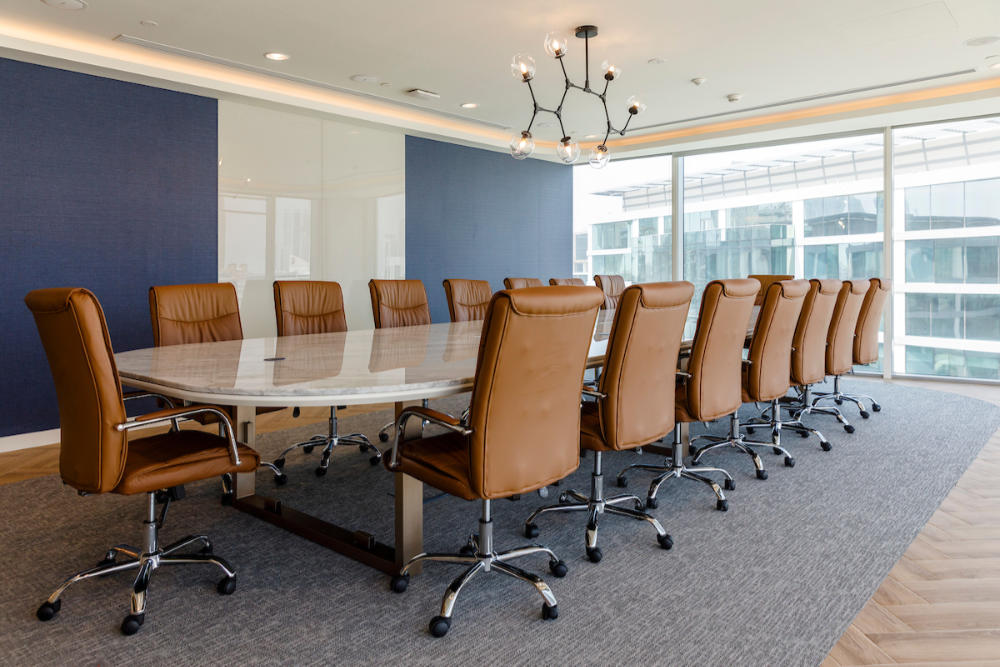
Businesses had to find innovative ways to ensure that the well-being and safety of employees remained as top priorities, while simultaneously maintaining a positive work environment and healthy job culture. Moreover, this had to be balanced with organizational goals, by monitoring productivity and efficiency in terms of time taken, and quality of work. In this section of our look back on office design in 2022, we delve into the overarching trends that took businesses by storm, primarily due to their overall effectiveness, regardless of industry, size, flexibility, and work style.
1. Color Trends
Why is color important in office design? What are the effects of a good color palette? These were just some of the important questions posed by offices in the past year. Color has proven to be a competent tool that enables businesses to set a productive mood while reinforcing specific thoughts and feelings. Long gone are the days when stark white walls were the norm. Companies now have sought to create spaces that can enable creativity and productivity with the highest efficiency through the use of color. Certain colors have been proven to have positive effects on individuals, encouraging comfort as well as out-of-the-box thinking in the long run. In 2022, some of the most prevalent color trends included the following:
A. Comfort colors: Sage green, lilac, blue, and neutrals all come under the category of colors that induce feelings of comfort and relaxation. These colors help employees de-stress by inducing a powerful sense of calmness that can imitate the comfort they may have felt working from home.
B. Monotone colors: This trend takes colors from the same color family to create a space that has all the hues needed to create an elegant room that catches the eye. Common monotone themes include blue, neutrals, yellow, and green.
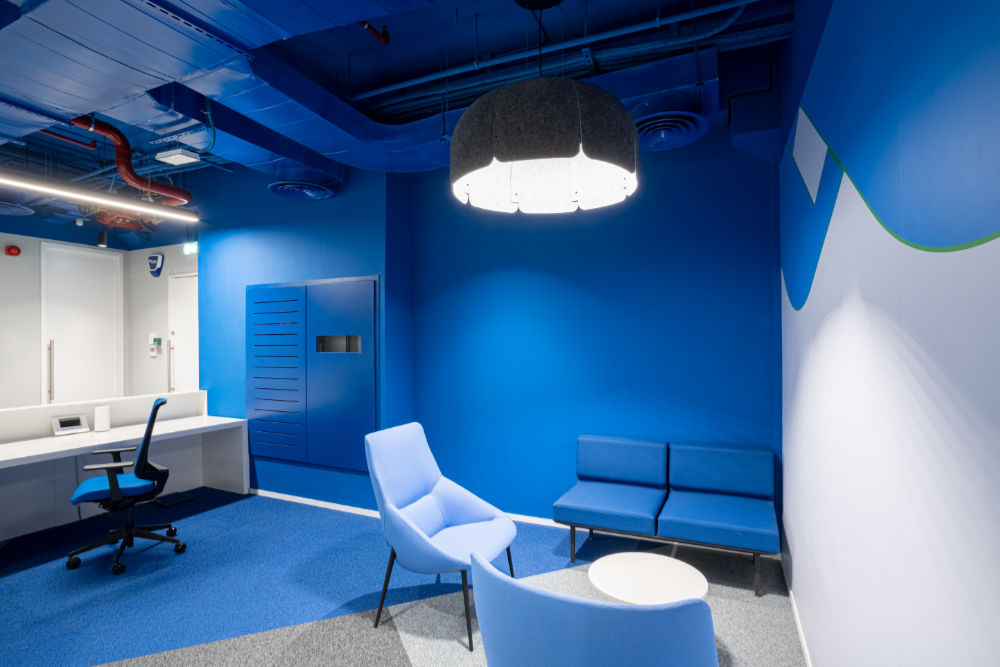

C. Bold: Many offices have begun playing with color layouts, painting a single wall a bold color to create a focused space where the eyes can be naturally drawn into. This pop of color can bring a sense of liveliness to the space, making it vibrant without being overbearing on the eye. Common colors used here include primary and secondary colors.
D. Shades of Green: The most prominent color of 2022 was green (Sage Green, Xanadu). Its various shades have taken interior office designs by storm, creating a sense of nature in an enclosed space. Some of the commonly used pairings generally include yellow and brown, creating a subtle yet homely feel to the space.
2. Ergonomics
Just a few years ago, if you asked someone about ergonomic furniture, they’d look at you with confusion, not understanding what you meant. However, in 2022, this term has risen in popularity, with offices pushing this concept mainly due to it being a branch of the ever-growing movement for employee well-being. Ergonomics, simply put, is a concept that takes into consideration the long-standing effects furniture and other objects have on people’s health both physically and mentally. It is a process that involves the design, creation, and arrangement of spaces to better fit the people who use them. Not only does this concept promote employee safety, but it also helps in efficiency both in the short and long term.
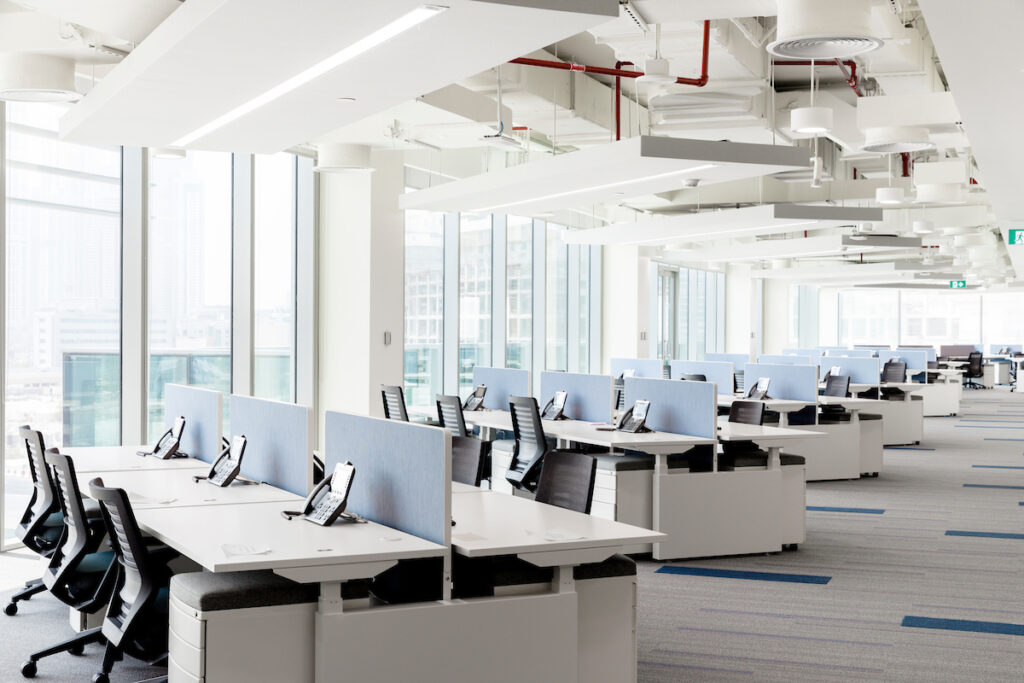

A great example to better understand this long-standing trend is standing desks. Studies have shown that sitting for prolonged hours not only hinders good posture but also blocks regular circulation which can cause health issues down the line. Sit/stand desks address this issue through the ergonomic use of adjustability. Users can not only adjust the height of the desk to better suit their height but also use it to take breaks from sitting for too long. Ergonomic furniture and layouts are tools that can help better the office experience, reducing risks of undetected health issues that may come up later on.
3. Biophilic designs
The biophilic design trend is a reflection of the rising need to connect with nature. Many individuals have found that by staying indoors for the better part of two years, there comes a need to somehow connect with the outdoors. This craving for nature resulted in many purchasing plants to bring nature to them. Now that restrictions have been lifted, this trend has made its way into offices, with studies showing that employees feel much more relaxed and productive with these elements present. Generally speaking, biophilic design involves incorporating natural world into a corporate environment.
Biophilic experiences can reduce stress, improve cognitive function, and enhance an individual’s overall mood, essentially aiding in the creation of a space that can help promote critical thinking and a positive work environment. Easy ways to incorporate this trend would be to add plants to various places within the office. It not only aids in employee well-being but also decreases the sense of distance that an office unknowingly tends to have.
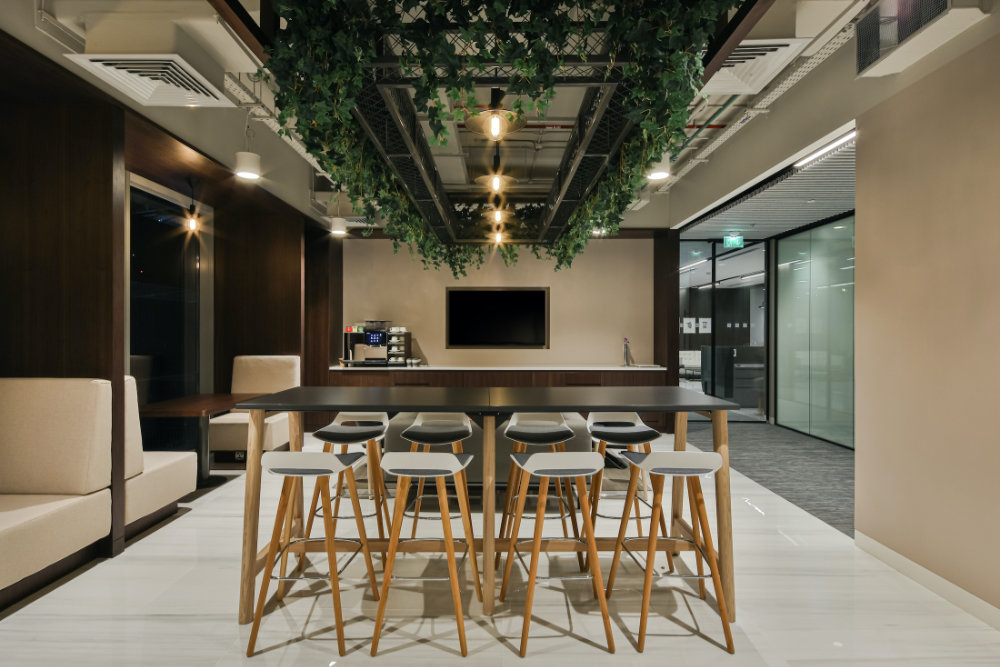

4. Technology
Technology within the workplace has drastically shifted during and after the pandemic. Analog ways of performing and completing tasks have been scrapped in favor of technologically inclusive devices that can enable seamless workflows and collaborations between individuals from different locations. Interconnectivity is a concept that is at the forefront of technological advances in 2022, with phygital workspaces being the solution to ensure that this concept is not compromised. A phygital workplace, also known as an omnichannel workplace, is a tool that bridges the gap between physical and digital spaces to create a workplace that enhances performance and collaboration between individuals and teams, regardless of their location.
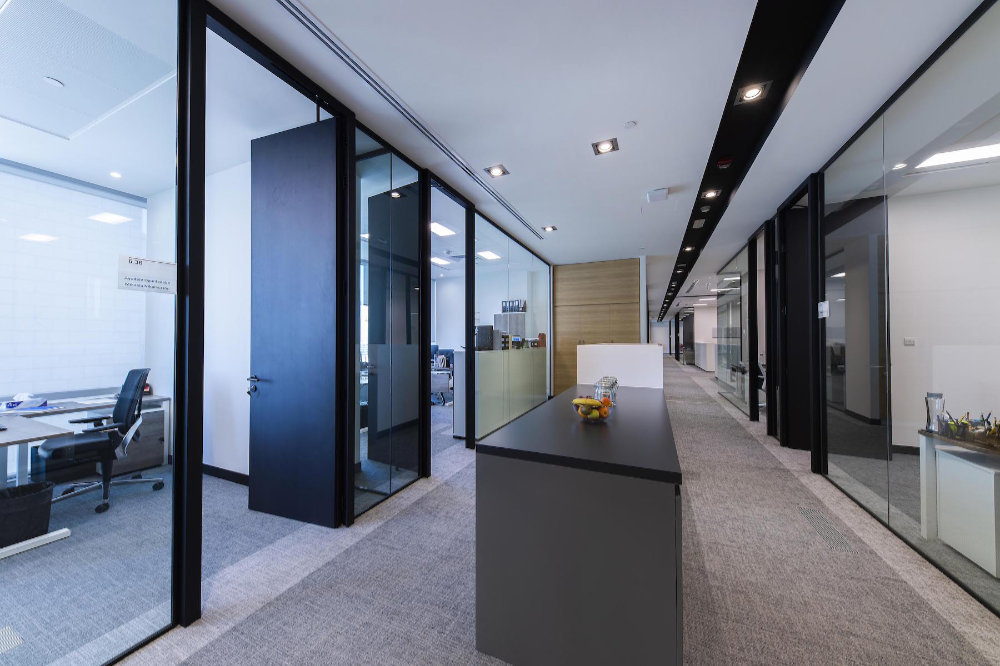

It is a space where both offline and online worlds can co-exist, creating a well-rounded space that can account for any situation. It effectively uses innovative technologies to create safe and efficient spaces where employees can reduce the time taken on tasks while being flexible in terms of performing various work-related objectives. Furthermore, it is a trend that puts connectivity and access at the forefront, ensuring that employee needs and goals are met in the process. Technology in the workplace can include anything from systems and processes to software and virtual tools.
5. Sustainability
To be a sustainable workplace is to be a space that balances the planet, people, and organizational goals to produce success and productivity in the long run. This concept rose to prominence due to the rising trend of green initiatives on an interpersonal level and the increasing importance of employee satisfaction within the workplace. Sustainable workplaces not only focus on what needs to be done but how it should be done in order to produce the best result. Organizations all across the world from various industries have embraced a more sustainable lifestyle as a way to present their values and measure impacts and outcomes, while prioritizing employee safety and well-being.
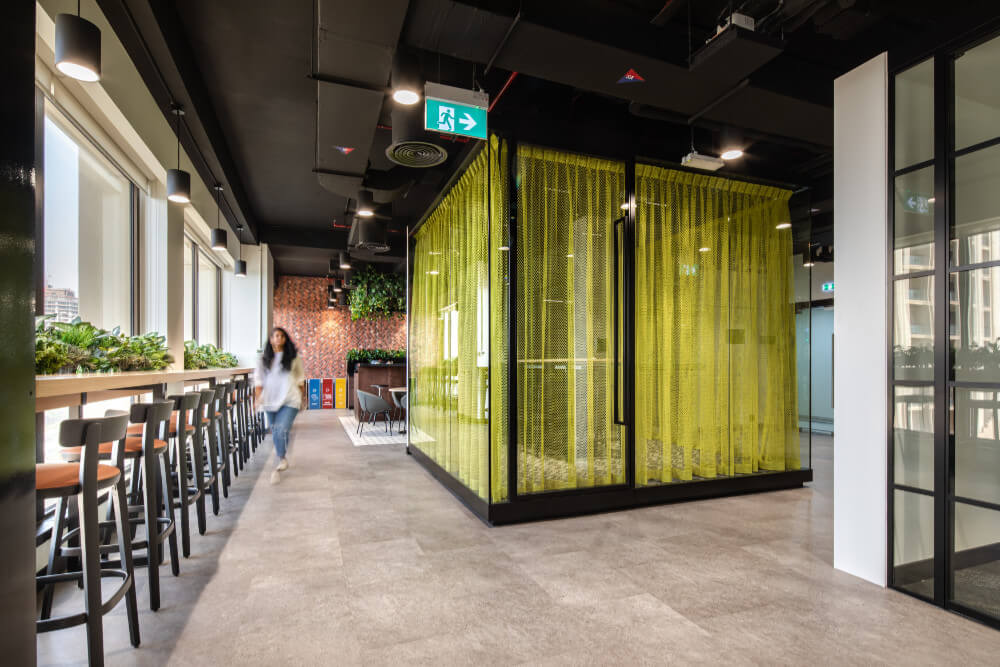

Companies have implemented sustainable practices by taking small steps that make big differences. Ditching white lighting in favor of natural lighting, and using machines and technology that have energy-saving functions to name a few are changes that have been introduced to reduce carbon emissions while making their employees happy.
6. Resimercial Offices
The pandemic has shown offices that employees can be highly productive if their comfort is at the forefront of design. This revelation brought forth the creation and popularity of the resimercial office space – a workplace that combines the best aspects of residential and commercial spaces to create a productive environment that puts employee satisfaction as its main priority. Employees no longer want to put up with the bare minimum. Basic setups are being replaced with more dynamic spaces that can better address their various needs. A resimercial space focuses on two main aspects; comfort and satisfaction. This office layout allows companies to provide their employees with an effective support system that makes them feel productive while encouraging healthy interactions and critical thought processes.
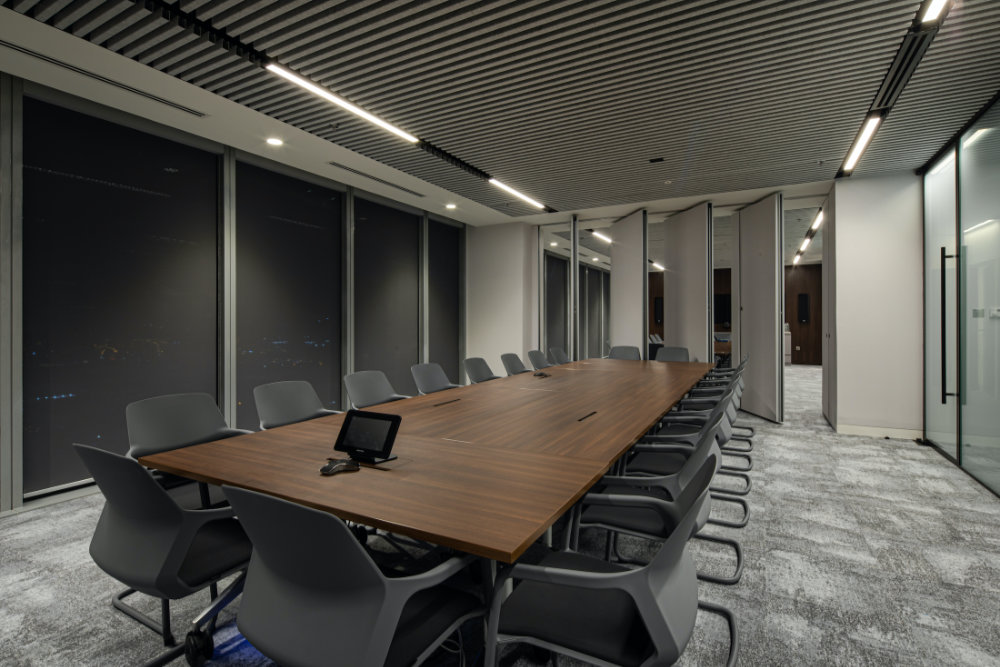

Resimercial spaces generally include physical concepts like zoning, where employees can find the perfect middle ground for their social as well as productivity-related needs. It promotes a free-flowing set of spaces that allow employees to choose whether they want to work privately and focus, or enter areas where collaboration is encouraged. By introducing the concept of familiarity from the employees’ homes to create relaxing spaces, resimercial offices have shown their ability to help decrease stress levels and help cope with work and social expectations. Creating zones, which incorporate art and lighting to create a homelike feel has been positively attributed to long-term employee satisfaction in offices of all sizes.
What the future holds
The spaces we inhabit have a distinct physiological and psychological impact on our well-being and overall happiness. Spaces with elements like the ones stated above have proven to be a step in the right direction for companies, regardless of industry or size. 2022 has shown us that employees are gravitating to the concept of familiarity now more than ever. Along with these needs for familiarity, employees have also begun understanding their own unique work styles that ensure their own personal productivity and contribution to organizational goals. The onus falls on the companies to enable employees by creating flexible spaces that can be adjusted for personal satisfaction – effectively moving from a one-size fits all approach to a more interpersonal one that addresses unique needs.
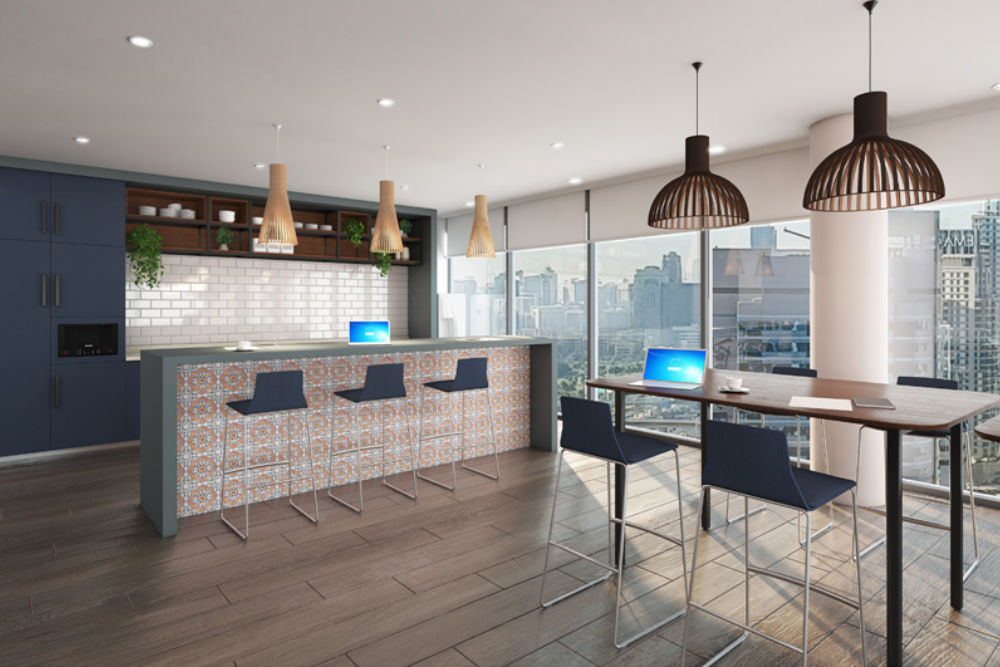

With 2023 just over the horizon, the question remains: What will offices look like in 2023? Will it be a continuation of 2022, or can we expect something completely different? Well, the answer isn’t as simple as it may seem. Color trends will almost always shift throughout the years, but the overarching needs for employee wellness and sustainability are expected to continue well into the year and beyond. While trends may evolve over time, employee needs generally remain the same. Employees desire a space that can cater to their needs for productivity, comfort, and collaboration. The office space is officially no longer limited to the confines of an artificial space, and this year has shown that the sky is truly the limit for what businesses can do to ensure that their employees are satisfied and motivated.
